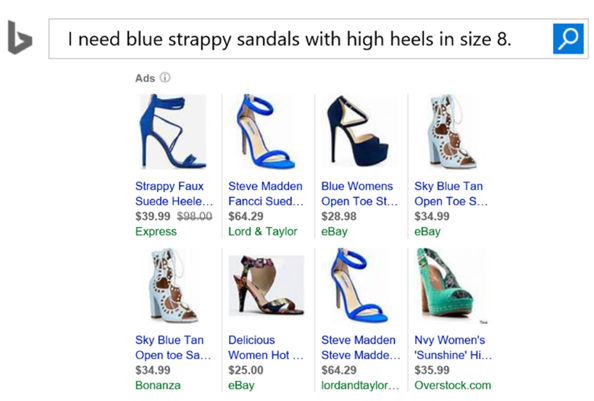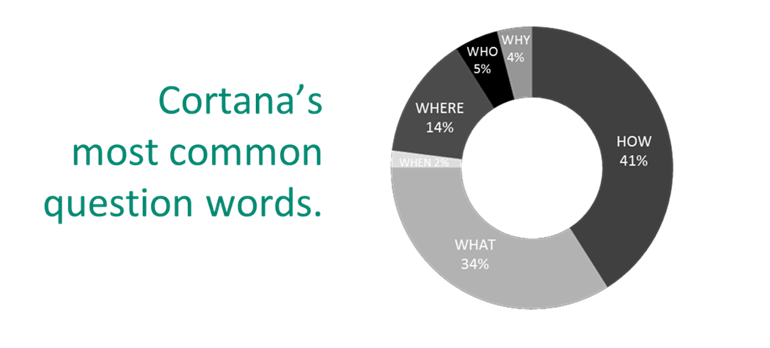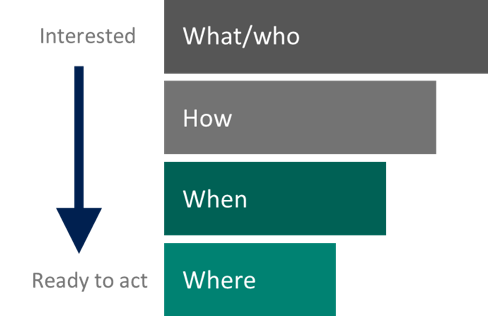The Evolution of Voice Search (and what it means for PPC)

Speculating about the future has always been one of my favorite things to do, especially in recent months. Why? Because digital advertising is on the cusp of large-scale, sweeping changes. Artificial intelligence, conversational commerce and voice search will alter how we behave both as consumers and as advertisers.
And I couldn’t be more excited.
I recently had the pleasure of joining Diane Anselmo and Bonnie Pogorelc for a webcast on Bing Ads updates for 2017 and beyond. We covered a lot of ground, from similar and in-market audiences, to merchant promotions, dynamic search ads and everything in between.
But the topic that got the most attention was voice search, so I’m thrilled to share a few insights on how the next wave of search could impact the PPC world – today and in the future.
Search Evolves
The future of search is being shaped by major evolutions in the world of digital. Artificial Intelligence (AI), machine learning, and natural language processing are all going to rewrite consumer experiences.
Importantly for us PPC folk, these advances will transform search from being a reactive service requiring precise data inputs in order to produce ranked outputs, to becoming an empowered, predictive service that leverages algorithms.
Incredible amounts of data from a huge array of sources will be tied in, all working together to think ahead of a consumer’s needs and deliver personal results on any device.
The future of search is personal. Nearly three-fourths (74%) of online consumers get frustrated with websites when content (e.g., offers, ads, promotions) appears that has nothing to do with their interests. Today’s consumers expect more personal experiences that span all product and service categories. And those expectations extend to search.
The future of search is pervasive. By 2020, experts predict we’ll have 25 billion internet-connected devices. Consumers will expect to interact with and search on all those devices seamlessly. And they’ll want search results whenever and wherever they are.
The future of search is predictive. Today, search is pretty good at giving users what they’re looking for, but less so at telling them what they want to find, or even finding things they don’t even know they want. But advancements in AI and machine learning are changing all that.
In the 80’s, the desktop PC dominated. It was a world of web forms. This gave birth to the new internet services and powerful search, all of which led to smartphones and the age of mobile apps – a world of touch-based navigation.
The Age of Conversations
These days, voice search and conversational interfaces abound, and brands are discovering exciting ways to take advantage of it.
For example, the high-end clothing company Ted Baker recently partnered with Google Voice Search in a promotion. At specific Ted Baker locations, the window displays had key phrases on them. When you activated Google voice search and spoke the phrase, you unlocked incentives. This is an example of voice search not as a side dish, but as the central component of a marketing effort.
Closer to home, we love being able to order pizza off our Xbox or via the Amazon Echo. How easy is it to just speak 1-2 sentences and then have hot pizza being delivered to your door a short while later? Domino’s has done a great job creating conversational interfaces across multiple platforms.
With each of these new platforms, our world got a little smaller, and getting things done got a little easier. The next platform shift builds on the past, but adds a new level of intelligent experiences.
As voice search becomes more dominant, it makes Conversations as a Platform (CaaP) possible, unlocking a more human, personal way to discover, search for, access and interact with information. This new platform will enable us to interact with devices more intuitively, using natural language and conversations in place of a keyboard and mouse.
And this allows us to have an on-going conversation and relationship in context.
Voice Search: The New Dominant Platform
Improvements in natural language processing (NLP) are giving consumers a more natural and personal way to search. NLP is a key part of the future of search because when we think of “personal,” we don’t want to be restricted to a keyboard or required to repeat ourselves until we have articulated the specific phrase that unlocks the results we desire.
We need a system that allows us to speak and interact in the way that is most natural to us in that moment. Search must be able to understand and respond in that same form.
It’s a massive opportunity, with 65% of smartphone owners using voice assistants. For PPC pros, the trick is understanding how to take advantage of this opportunity.
CaaP includes personal digital assistants that know you, know about your world, and are always with you. These assistants inhabit all your devices, helping you with your everyday tasks. How? Because Cortana, Siri and Alexa will have the perfect understanding of the context you are in.
It’s not just limited to voice assistants on our smartphones.
Everywhere we turn, this vocal thing is hitting us over the head. We can’t escape it in our home, our cars, even on vacation. For example,
- Voice-controlled TV remotes, from the likes of Roku and Comcast
- Voice-controlled digital personal assistants in your car, such as Cortana in Nissan vehicles
- Even a voice-controlled hotel room, courtesy an experiment conducted by Siri and Aloft hotels called Project: Jetson.
This technology is catching on because of how easy it is to use.
Did you know the average person can type between 38-40 words per minute but can speak 110-150 words per minute? It’s 3.75x faster to talk than to type.
Voice is going to be a primary way for your consumers to engage with you. How is this going to affect the text-based way you’ve gotten so used to communicating with them?
3 Ways to Take Action TODAY
1. Start with Keywords
You probably know that text searches are concentrated around one to three words. But voice searches are longer through the tail, often containing 10 or more words, expressed in the form of a question. With Cortana, for example, we have a pretty clear picture of question words searches use most:

As voice search continues to grow, advertisers will need to get smarter about question keywords.
Using a tool such as Answerthepublic.com or SEMRush, you can research a handful of high-value natural language phrases and questions to test within your existing campaigns.
2. The Local-Mobile Connection
If I searched for the words “I’m hungry” on my desktop, the SERPs would be dominated by recipe ideas or food inspiration from sites like Pinterest. But if I do the same search on my phone via Siri or Cortana the results are completely different.
On my phone, I would get recommendations for restaurants around me even if I was sitting in the exact same spot from where I did the desktop search. Intent is inherently tied to the device we’re using. If you’re on your phone, the assumption is you’re on the go, or will soon be on the go.
Mobile voice search is 3X more likely to be local-based than text search.
This points to significant opportunities for advertisers to capture customers that may have otherwise gone to competitors. When PPC pros localize campaigns or keywords they may do so in a more literal way, e.g. 20 miles around this zip or we add county/city names to main keywords.
But think about how you would explain a particular location to a friend. You’d probably use more natural language using landmarks or common parlance, e.g. “meet me opposite the main library” or “at the corner of 41st and 8th.” Could there be value in testing out keywords in the similar vein? For example, “Is there still an ATM on the corner of 41st and 8th?”
More importantly, don’t forget to add on mobile ad extensions such as Action Link, Call and Location extensions. When you’re on the go and looking for something, it’s important to make it as easy as possible for the searcher to take the action they want.
3. Intent: From Interest to Action
If I were to do a search for “digital camera,” you’d have no idea whether I wanted to buy one, have one repaired, or was simply looking for stock images of cameras.
Here’s where the natural language usage within conversational search changes everything. The type of question asked can reveal the degree of intent:

If we had to sort through natural language queries, we could easily identify which ones had lower purchase intent – so we’d negate them out- or the highest purchase intent- so we could up our bids and creative for them.
With the right intent-driven creative, voice searchers can be more likely to convert since they have a clear path to the action they were looking to take.
And by thinking visually, PPC pros can deliver results that get to the heart of searchers’ intent.

A Peek into the Crystal Ball
Taking a longer view, what might the next search revolution bring? And how can you be ready for it?
Bots take the power of human conversations and apply it to everything. Think of bots as new applications that you converse with. Instead of looking through multiple apps, or pages and pages of websites, you can call on any application as a bot within this conversational canvas.
When you consider the growth of always-listening type voice devices, screen-less advertising is a real possibility.
Advertisers may be able to monetize the opportunity by building skills or bots for these devices, like how Domino’s lets you order pizza off Alexa. Consumers can also get information sent to them, think “Cortana send me links to white couches I might like.”
And, if we’re really speculating, what about creating audio ads that serve only when asked? “Alexa, are there any deals on running shoes?” We’ll just have to wait and see how this technology evolves.
Imagine a rich ecosystem of conversations: people to people, people to your personal digital assistant, people to bots, and even personal digital assistants calling on bots on your behalf.
That’s the world you’re going to see in coming years. By evolving with search, PPC pros can always remain relevant and in-demand.
###



